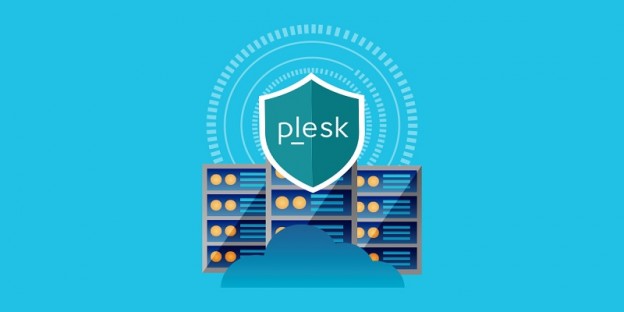Table of Content
In the rising demand for digitalization, protecting your data is of utmost importance to each organization. Furthermore, businesses should opt for best practices to protect sensitive website data from malicious attacks. Plesk is likely the most popular alternative to cPanel, comes with numerous security and hardening options to improve server security.
Plesk offers comprehensive server security, and your server will be secure considerably more with the help of its security tools.
We consider server security to be a critical component of server administration as a high-quality provider of server management services.
In this article, I will let you know the best practices for securing your Plesk dedicated server from malicious attacks.
Plesk Dedicated Server – What it is, exactly?
Plesk dedicated server hosting is an ideal solution for setting up your web hosting server. Aside from this, it is a complete solution that works with both Linux and Windows. It is specially made for companies, agencies, and qualified resellers. Despite this, Plesk hosting may be used to manage online projects and has a graphical user interface, so it doesn’t require a deep understanding of infrastructure administration.
You may make hosting spaces with it that are simple to use and comprehensive for all of your websites and customers. Although, you may set up regular data backups and email servers with a few clicks.
Ways to Secure Plesk Dedicated Server in India
Here, I’ve mentioned a few top practices that you should consider to protect your Plesk dedicated server. So, let’s examine them!
1. Timely Up-to-Date Plesk:
Before proceeding, ensure that your Plesk configurations are up to date. Plesk updates automatically install any components required to significantly improve server security. Therefore, the best way to secure a Plesk server is to keep it up to date. Use the following methods to determine whether you have an updated version:
On the options menu, choose “Automatically install Plesk updates.”
As part of the security updates, you should double-check the installation of Plesk Firewalls, Fail2Ban, and ModSecurity.
2. Security Procedure:
Safe FTP connections to the server can be possible depending on the Plesk security settings. Besides, by inputting a strong password, you can modify the password settings.
To alter the minimal password necessary:
Select your preferred password policy strength by navigating to the “Security” tab in settings, then to the “Password Strength” tab. Push the OK button now.
If FTP only permits authorized connections to the server, attacks can be avoided. Therefore, increase the security of Plesk by securing the server with a strong password that thwarts attempts to hack the main login. By using this method, we are preventing server-side brute-force attacks.
3. Attack Utilizing Force and Fail2Ban:
The log files on the Plesk server are kept track of and protected from brute force assaults with the aid of Fail2Ban. Any unlawful login is viewed suspiciously by it. Consequently, the Fail2Ban notifies the user or temporarily blocks their IP address from accessing the server if any of these login attempts are made.
Steps of Configure Fail2Ban
- Make a filter that scans a log file for unusual activity using one or more regular expressions.
- Jail is a collection of several individual situations. This might make it possible to use the information provided to carry out crucial measures in the case of an attack.
- It should include your IP address. By limiting access to just authorized IP addresses, server attacks can be prevented.
You might also try turning on and off a jail, you’ve made in addition to these. On the flip side, you can try to unban the restricted IP address if you feel compelled to. With Plesk, you can choose from numerous prison setups and filters.
4. Configuration of ModSecurity’s Web Application Firewall:
Through ModSecurity, it is possible to detect and prevent web application attacks. Which requests should be handled depends on the rules and regulations of the web application firewall. Another way to put it is that when a user submits a query, the firewall kicks in, and only successful HTTP requests receive content from the site.
Aside, you can now customize the rule set’s settings in Plesk and turn on ModSecurity.
The way to install the ModSecurity component is as follows:
If you want to add or remove any component, you must go to the “Updates and Upgrades” settings. Search for Web Hosting Groups under “Add/Remove Components.”
ModSecurity rules can now be used out-of-the-box or you can write your own.
5. Installing the Firewall:
The network connections coming into your server are monitored and secured by your Plesk Firewall. These are the configuration steps:
- Initially, select “Tools and Settings” and then “Firewall Management.” Turn on “Firewall Rules Management” by choosing it.
- A preview of the status box that permits the Firewall module will now be visible. Just turn the power on.
- If a successful green box appears and the Firewall rules administration is turned on, you’ve arrived.
To change the firewall’s configuration,
- You can change the Plesk Firewall rules using the Tools and Settings section.
- Now choose an SSH server.
- Choose the property setting that enables you to let traffic from some sources while preventing it from other sources.
- Also, include the IP address to which you want to provide access.
- Hit on OK.
Wrap Up!
While wrapping up, I hope this blog will aid you to secure your Plesk dedicated server hosting from malicious attacks. Well, Plesk hosting is one of the greatest servers with a high level of security. Very less users are aware of Plesk’s security features that it can give your server a high level of security. Therefore, to improve Plesk’s security, we’ve included some of the top ways to protect your servers.






 Live Chat
Live Chat